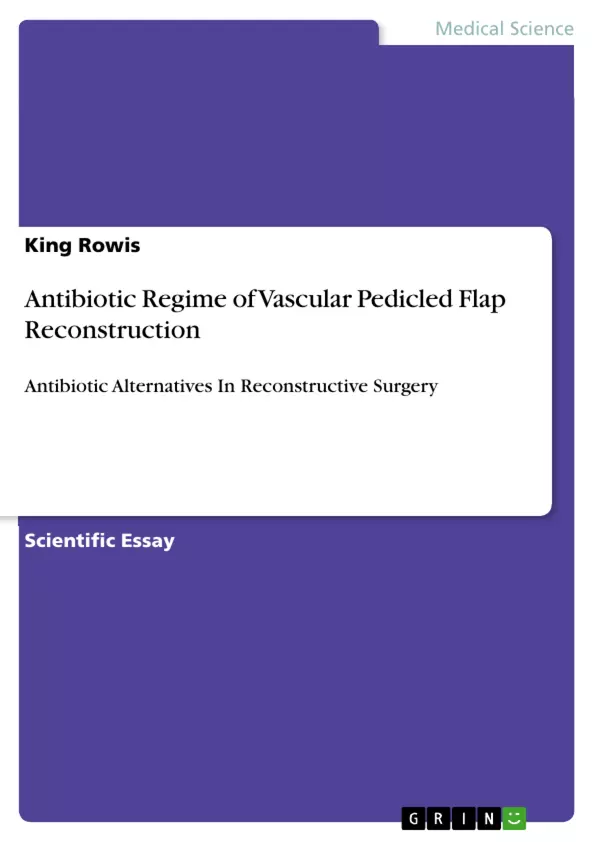In order to highlight the problem at hand, intrathoracic defects were chosen to offer an understanding of the key process involved in the reconstruction process. Intrathoracic disorders present numerous distinct challenges and specific issues are related to steady “dead space” and bronchopleural fistulae. The residual pulmonic section change cannot be in most cases be trusted upon to seal the thoracic “dead space,” particularly in “post-radiotherapy” cases of clients and this therefore offer a steady setting for empyema and contamination. In this case bronchopleural fistula offers a steady strenuous escape that brands flap devotion particularly hard.
There are rare core medical standards that try to discourse the issues of “dead space” and “bronchopleural fistula.” The leading standard is associated with the Clagett standard of presented empyema conclusion deprived of straight “dead space” destruction and the second is the part of the tissue blinders in bronchial base exposure and lifeless cosmos sealing. The third one regards to measured conclusion of “bronchopleural” fistula by the establishment of a designed air fistula. For a description of phased closure of empyema disorders Clagett and Geraci accomplished it by the establishment of a huge exposed opening thoracotomy, and exposed pleural channel debridement.
Inhaltsverzeichnis (Table of Contents)
- Antibiotic Regime of Vascular Pedicled Flap Reconstruction
- Literature Review
- Empyema and Pedicled Flap Alternatives Conserved
- Evidence Review and Procedure for Treatment
- Free Flaps versus Pedicled Flaps
Zielsetzung und Themenschwerpunkte (Objectives and Key Themes)
The primary objective of this work is to explore the use of antibiotic regimes in vascular pedicled flap reconstruction, particularly in the context of intrathoracic defects. The focus is on understanding the challenges of reconstructing intrathoracic defects, which are often complicated by the presence of dead space and bronchopleural fistulae. The paper evaluates existing surgical techniques and antibiotic regimens in light of these challenges.
- The challenges of reconstructing intrathoracic defects
- The role of antibiotic regimes in flap reconstruction
- The use of pedicled and free flaps in intrathoracic reconstruction
- The efficacy of existing surgical techniques for managing dead space and bronchopleural fistulae
- The need for further research to establish best practices for intrathoracic reconstruction
Zusammenfassung der Kapitel (Chapter Summaries)
- The first chapter introduces the problem of reconstructing intrathoracic defects, highlighting the challenges posed by dead space and bronchopleural fistulae. It reviews existing standards for addressing these complications and discusses the limitations of conventional methods.
- The second chapter examines the role of tissue blinders in intrathoracic reconstruction, reviewing the benefits and limitations of muscle blinders and omentum. The chapter also explores the concept of controlled air fistula and its application in managing bronchopleural fistulae.
- The third chapter delves into the literature on flap reconstruction for intrathoracic defects. It highlights the lack of definitive evidence on the optimal approach and discusses the limitations of existing research. The chapter also underscores the importance of collaboration between thoracic and plastic surgeons in managing these complex cases.
- The fourth chapter discusses the use of pedicled and free flaps in intrathoracic reconstruction, outlining their respective advantages and disadvantages. The chapter examines the role of the Clagett procedure in managing dead space and the application of free flaps in cases of extensive thoracotomies.
- The fifth chapter focuses on the evidence review and procedure for treatment of intrathoracic defects. The chapter emphasizes the lack of conclusive evidence on the optimal management strategy and underscores the need for a comprehensive approach that integrates thoracic and plastic surgical techniques.
Schlüsselwörter (Keywords)
The key terms and focus topics in this paper include: intrathoracic defects, bronchopleural fistula, dead space, antibiotic regimes, vascular pedicled flap reconstruction, tissue blinders, free flaps, thoracic surgery, plastic surgery, evidence review, treatment procedure, and optimal management.
- Quote paper
- King Rowis (Author), 2017, Antibiotic Regime of Vascular Pedicled Flap Reconstruction, Munich, GRIN Verlag, https://www.grin.com/document/359359



